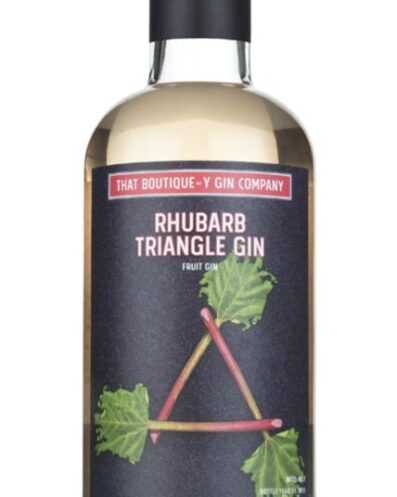In 1930, the Rhubarb Triangle spanned 30 square kilometers of the British countryside.
Britain’s taste for Rhubarb was epic. In the 19th century, Great Britain imported most of their rhubarb from China. However, trade became strained with China as the two nations engaged in the Opium Wars. Britain sought local sources to sate their rhubarb habit. Thus, the rhubarb industry experienced incredible growth, culminating in a massive 30 sq. km triangle in West Yorkshire where what today is known as “Forced Rhubarb” was developed and perfected.
A backbreaking and complex process, Forced Rhubarb refers to a process whereby a two-year-old rhubarb plant is wintered indoors in absolute darkness. This process forces the plant to look inward and consume its own body for survival. The root is converted to sugars. The leaves wilt and emaciate. And the stalks become sweet, distinctively sour, and take on ruddy crimson hue.
Today only twelve farmers remain and the triangle is a shadow of what it used to be; however, due to those farmers’ efforts the term Forced Rhubarb was issued protective status in 2010 under EU geographic designation of origin. Only rhubarb producers in Wakefield, Bradford and Leeds can grow this type of rhubarb.
And its this special kind of labor intensive rhubarb that Rhubarb Triangle Gin from That Boutique-y Gin Company celebrates.
Tasting Notes
The nose of Rhubarb Triangle Gin is a celebration of rhubarb. Fresh, bright rhubarb sings with hints of raspberry, lemon juice, and a hint of lemon verbena. Rhubarb Triangle Gin reminds me of a fresh, berry flavored lemonade— not from packets but fresh-squeezed fresh lemons.
The palate is probably best described as the “gin embodiment of rhubarb pie.” At first sour with notes of cranberry and lemon, Rhubarb Triangle Gin is sweet and creamy by mid-palate. Notes of strawberry, apple baking pie spice mixed with graham crackers, and a hint of custard— Rhubarb Triangle Gin is incredibly luscious.
The finish rounds out the rhubarb-bomb early with slight notes of juniper and orange. Moderately long finish with mild warmth. It’s absolutely lovely.
Overall
Even if you don’t normally love rhubarb, the distillation process creates notes of berry and custard that although loud in their own right, are nicely balanced. But still this gin might not be for you.
If you do like Rhubarb, perhaps you’re sold already. And rightfully so. Rhubarb Triangle Gin is a lovely ode to the crimson vegetable and British culture. The gin itself is extraordinarily contemporary in approach. The juniper and other traditional gin botanicals add depth and color— and that’s where it’s so successful. Despite the contemporary approach it’s not just a rhubarb vodka. Rhubarb Triangle Gin works because the gin botanicals are a perfect complement.
Recommended.
*for more on Britain and Rhubarb, check out edition two of Gin Magazine where I talk about Warner Edwards’ Rhubarb Gin

